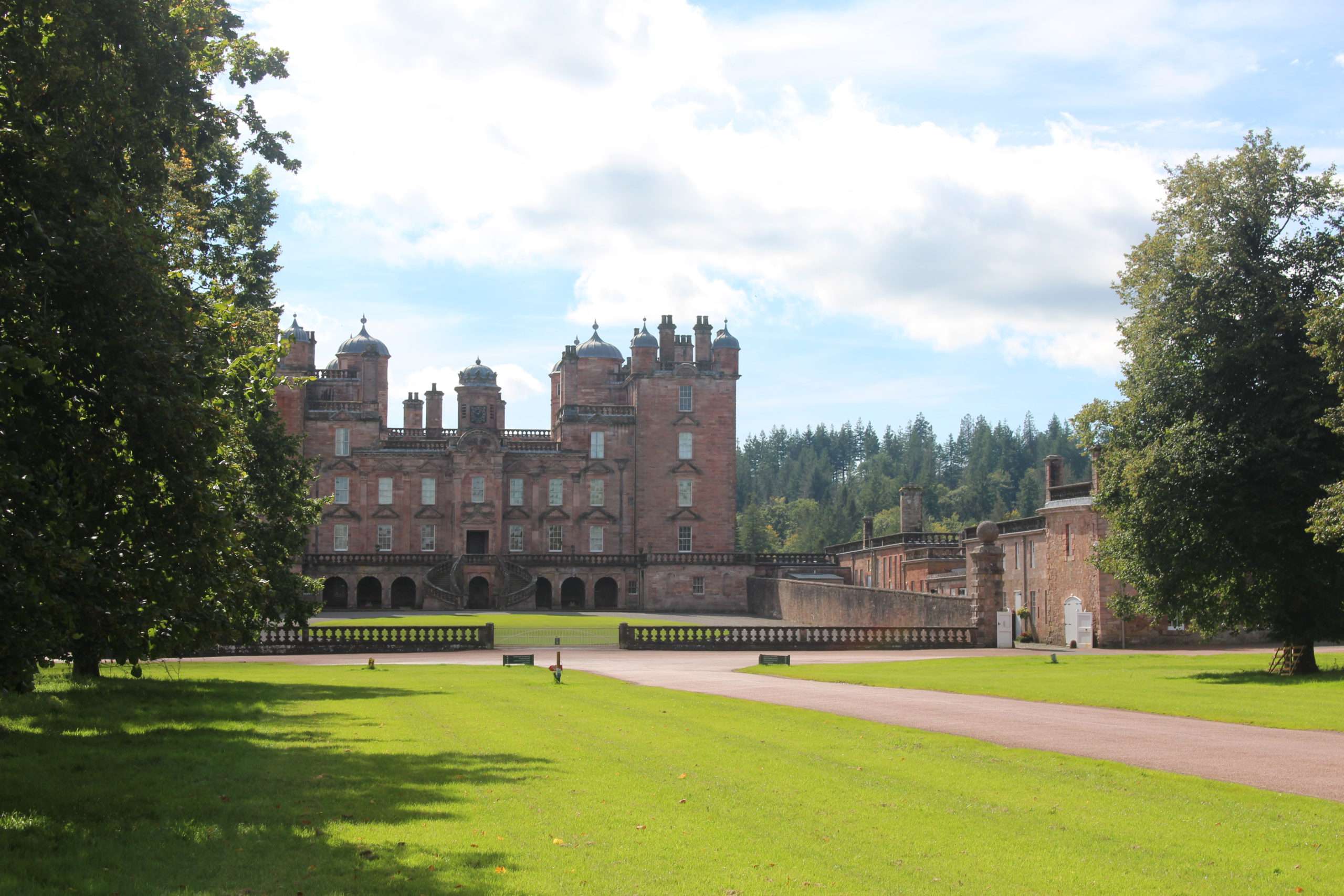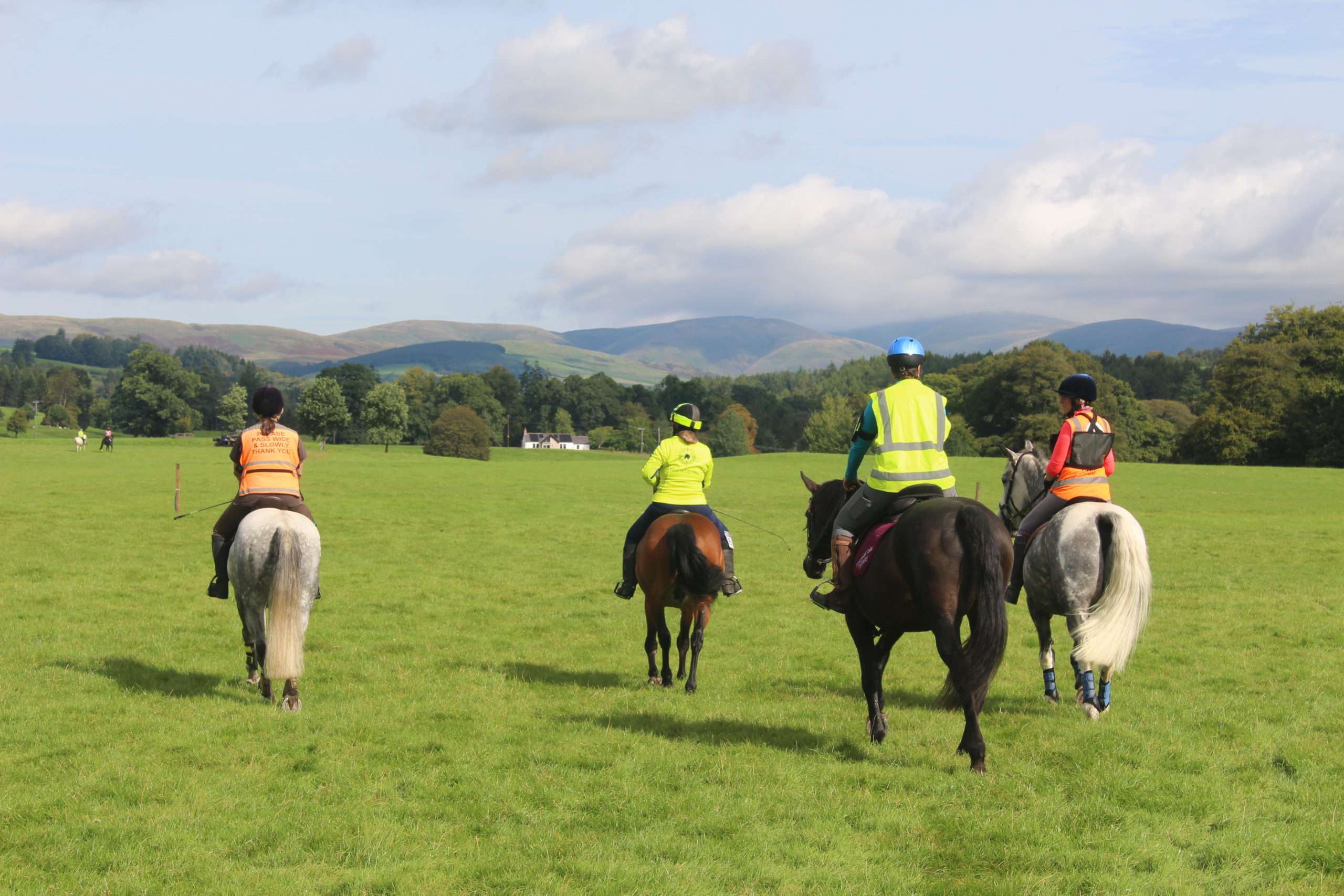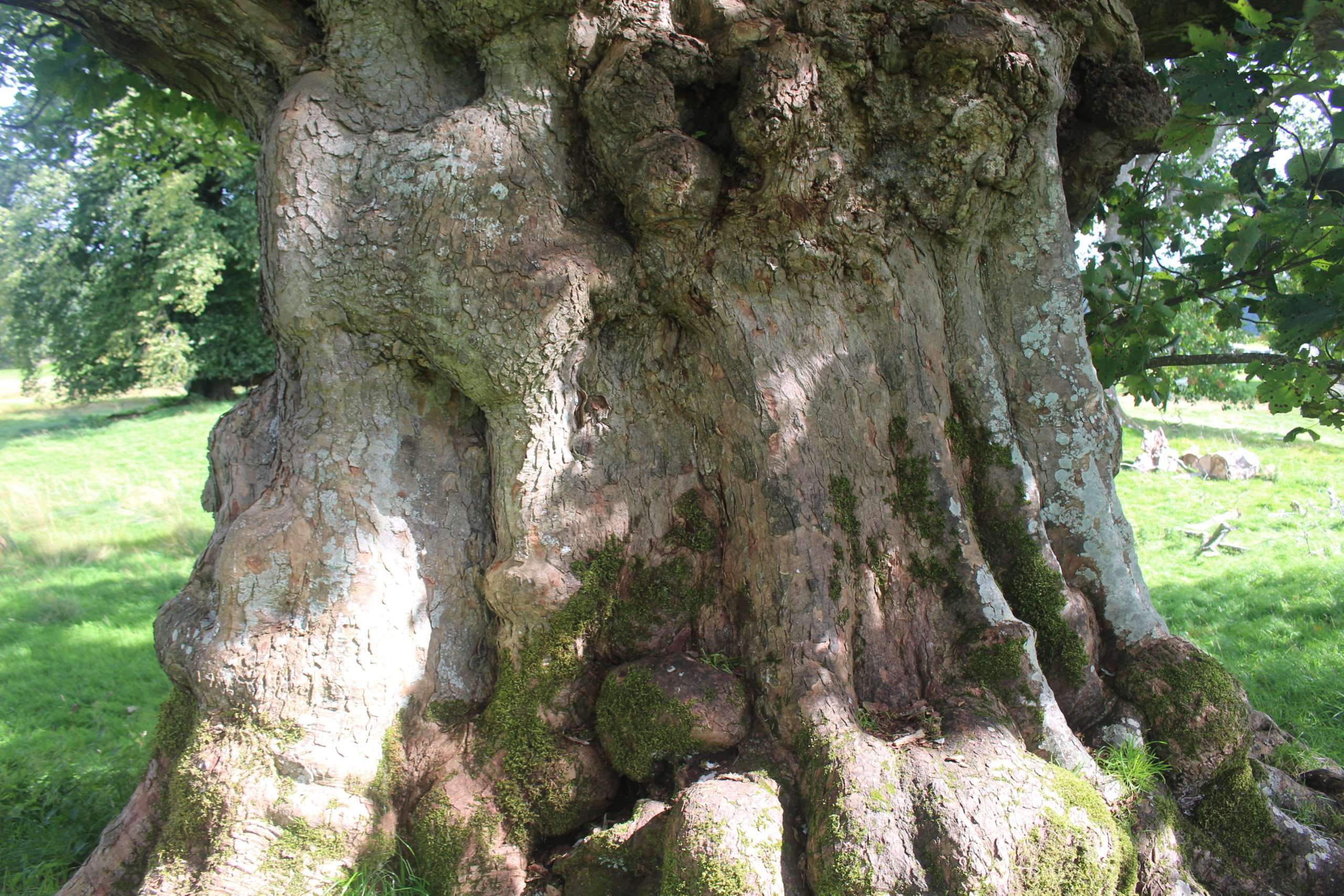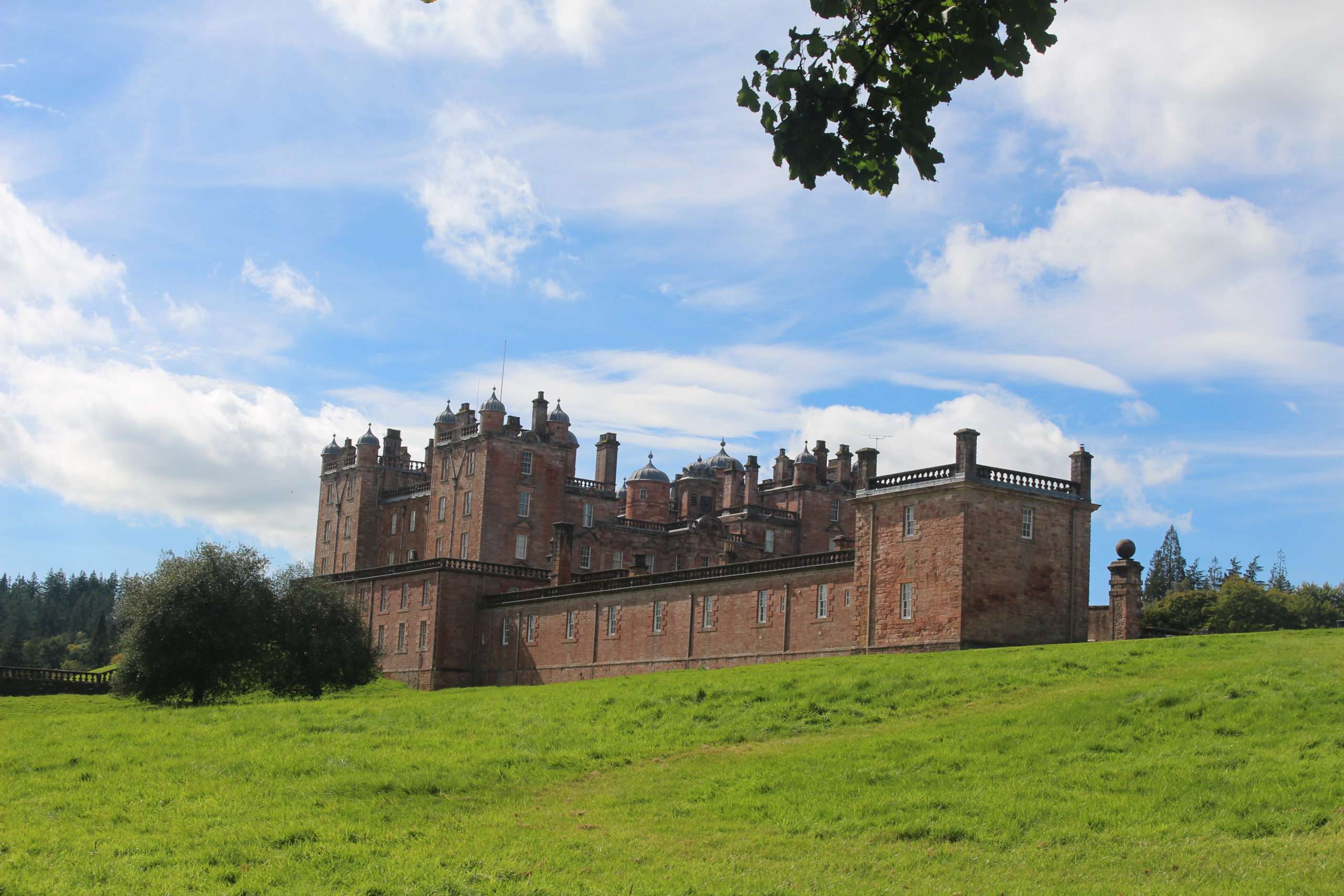If anyone outside Scotland has heard of Drumlanrig Castle, it’s likely to be in the context of the audacious art theft that took place there in 2003, when the Madonna of the Yarnwinder, a painting attributed to Leonardo da Vinci, was removed from the castle. It was recovered in 2007 and is now on display in the National Galleries of Scotland in Edinburgh, on loan from Drumlanrig’s owner, the Duke of Buccleuch. The heist was the subject of the 2023 BBC podcast series The Missing Madonna.
Drumlanrig is about three miles from Thornhill in Dumfriesshire, in the valley of the Nith. A castle of some description has existed here from around the 14th century. The Douglases owned the land, later supporters of Mary Queen of Scots. In 1575 the house was destroyed as a punishment for their support. Almost every ancient building in Scotland claims that Mary slept there, but here it’s true. She overnighted in old Drumlanrig in 1563.
A baronial mansion

The ruined house was restored and another monarch, James VI, slept there on his last visit to Scotland in 1617. In the second half of the 17th century the present building – a baronial mansion rather than a castle – was constructed for William Douglas, the 3rd Earl of Queensberry, incorporating some elements of its predecessor including the cellars. It was built on a grand scale, with four ranges around a courtyard and sizeable square towers at each corner. Each of the four towers is topped by four pepperpot turrets. And yet the Third Earl didn’t like it, and moved back to his older home at Sanquhar Castle. It was his son James, the 2nd Duke, who eventually shifted his main residence to Drumlanrig, and Sanquhar was left to decay. The building sustained some damage in 1745 when Charles Edward Stewart stayed there during the Jacobite retreat from Derby. Some of the army sacked parts of the castle – and allegedly slashed a painting of King William of Orange!
The castle passed to the Scott’s, the Dukes of Buccleuch, in 1810. It was restored and added to during the 1820s. Today, it remains the home of the Duke of Buccleuch, whose family now bears the rather complicated family name of Montagu-Douglas-Scott. The castle is open for guided tours during certain dates in the summer. The art collection in particular is well worth the effort to see, with works by Holbein and Rembrandt. The supposed Leonardo shows the infant Christ grasping a cruciform yarnwinder, prefiguring his death on the cross. Experts disagree, but it seems probably that Leonardo didn’t paint all of it. In any case, of course, it’s now in Edinburgh.
Ghosts

There are three ghosts said to haunt Drumlanrig, if that’s the sort of thing that appeals to you. One of them is a bit out of the ordinary; the ghost of a monkey, which appears, appropriately enough, in the Yellow Monkey Room. More traditional and even old-school is the ghost of a Lady Douglas who apparently carries her head under her arm. A third alleged ghost is of a young woman in a diaphanous dress. It doesn’t sound too unpleasant to me, but it’s supposed only to appear to you if you are taken ill in the castle.
The grounds around Drumlanrig Castle form a country park that’s open all year. There’s broadleaved woodland, pine plantations and open moorland as well as gardens closer to the castle. The woods and moors are crisscrossed by footpaths, cycle routes and mountain bike trails, all signposted from the visitors’ car park. Nearby, in the castle’s outbuildings, you’ll find a café and shop which are open in the summer.
The castle’s setting is a particular joy, and its woodlands are great natural green cathedrals of peace. Walking, cycling or riding a horse (my wife has done the last of these!) on the grand avenue leading to the castle is awe-inspiring too. Your first approach to the castle is by this long, straight, woodland-bordered drive that is impressive enough in itself, even without the view ahead to Drumlanrig’s most imposing frontage.
Once you’ve arrived, I recommend that you pop over to a viewpoint just to the east of the car park. It looks out over an open area of meadowland pasture broken by some trees. One of them, described on the information panel at the viewpoint, is the Drumlanrig Sycamore. This superstar was already one of Scotland’s heritage trees. It’s believed to be around 300 years old and was described in detail in a book called Old and Remarkable Trees of Scotland as long ago as 1887. As part of the late Queen Elizabeth II’s Platinum Jubilee celebrations in 2022 it was named as one element of the Queen’s Green Canopy, 70 ancient trees throughout the UK recognised for their grandeur. Talking of ‘canopy’, the sycamore’s has been measured as covering around 800 square metres! It’s believed to be the largest sycamore in the United Kingdom.
Roman remains

However, the sycamore is not the only Drumlanrig heritage tree, as you’d perhaps expect in such a wooded environment. The Drumlanrig Douglas Fir can be found in woodland to the north of the castle. It was grown from one of the original seeds sent by David Douglas (who gave his name to the species) to Scotland, and was planted in 1827. At the time, the Clerk of Works at Drumlanrig was John Douglas, David’s brother.
There are three known Roman forts in the Drumlanrig area, a reminder that the invaders forged north in some numbers through what is now Dumfries and Galloway. The area is dotted with Roman remains, notably at Durisdeer just off the A702 road that threads the Dalveen Pass to Elvanfoot. The Romans actually built an early predecessor of the A702 and near Durisdeer you can visit the visible remains of one of their fortlets. This area’s history did not begin with the Douglases of Drumlanrig.
Drumlanrig is a stunning building in a green and welcoming setting. For most visitors to Scotland, it is perhaps a little of the beaten track – but that’s perhaps not a bad thing.
Text and images courtesy of David McVey.


I work on drumlanrig every winter and im a huge advocate for Scottish history and i truly thank you for this overwhelming appreciation that you have just doubled for my beautiful and legendary land